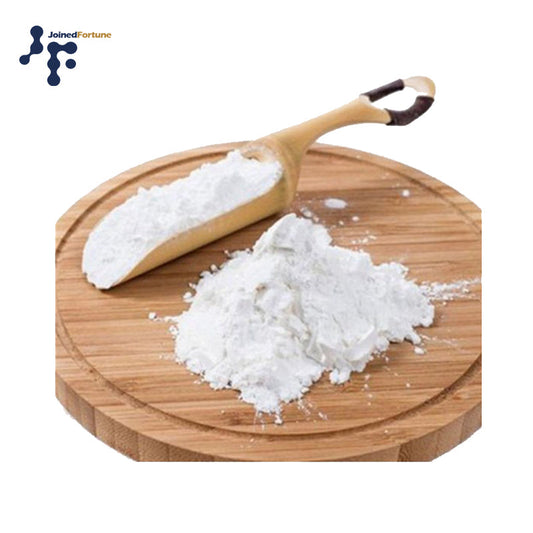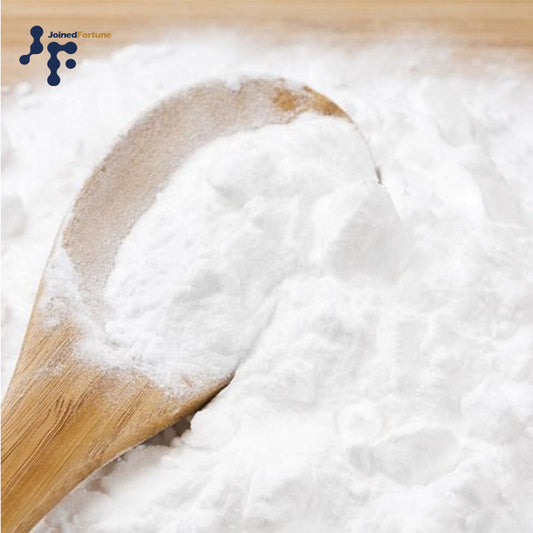News

The difference between corn starch and wheat st...
I.Different raw materials. 1, corn starch: the starch extracted from corn, also known as corn starch. Commonly known as six grain flour. 2, wheat starch: starch extracted from wheat, the...
The difference between corn starch and wheat st...
I.Different raw materials. 1, corn starch: the starch extracted from corn, also known as corn starch. Commonly known as six grain flour. 2, wheat starch: starch extracted from wheat, the...

Advantages of resistant starch
Main advantages 1、Resistant starch can resist the decomposition of enzymes and release glucose slowly in the body, with a lower insulin response, which can control the balance of blood sugar...
Advantages of resistant starch
Main advantages 1、Resistant starch can resist the decomposition of enzymes and release glucose slowly in the body, with a lower insulin response, which can control the balance of blood sugar...

Role of resistant starch
What is resistant starch Resistant starch: Resistant starch, also known as anti-enzymatic starch and indigestible starch, cannot be enzymatically digested in the small intestine, but can react with volatile fatty acids in the colon of human gastrointestinal tract for fermentation.Resistant starch exists in some natural foods, such as potatoes, bananas, rice, etc. All contain resistant starch, especially the high straight chain starch of corn starch contains up to 60% resistant starch. This starch is more difficult to degrade than other starches, is digested slowly in the body, and is absorbed and enters the bloodstream more slowly. Its nature is similar to dissolved fiber, has a certain slimming effect, and in recent years began to be favored by beauty loversRole of resistant starch. Resistant starch has a slimming effect. Some of the starch contained in the mixed rice is "resistant starch". The so-called resistant starches are also pure starches, but they cannot be digested by amylase, or are so slow that most of them end up in the large intestine instead of being digested in the small intestine. So, they don't turn into glucose, they don't enter the bloodstream and turn into blood sugar. And of course, they can't bring as many calories as regular starch. However, these starches that are not broken down into glucose and not turned into blood sugar are not completely wasted. They are fermented by colonic bacteria to produce healthful organic acids such as butyric acid, which, when reabsorbed by the body, is still more or less caloric, but does not raise blood sugar or turn into fat. It has long been found that butyric acid is good for blood sugar control.
Role of resistant starch
What is resistant starch Resistant starch: Resistant starch, also known as anti-enzymatic starch and indigestible starch, cannot be enzymatically digested in the small intestine, but can react with volatile fatty acids in the colon of human gastrointestinal tract for fermentation.Resistant starch exists in some natural foods, such as potatoes, bananas, rice, etc. All contain resistant starch, especially the high straight chain starch of corn starch contains up to 60% resistant starch. This starch is more difficult to degrade than other starches, is digested slowly in the body, and is absorbed and enters the bloodstream more slowly. Its nature is similar to dissolved fiber, has a certain slimming effect, and in recent years began to be favored by beauty loversRole of resistant starch. Resistant starch has a slimming effect. Some of the starch contained in the mixed rice is "resistant starch". The so-called resistant starches are also pure starches, but they cannot be digested by amylase, or are so slow that most of them end up in the large intestine instead of being digested in the small intestine. So, they don't turn into glucose, they don't enter the bloodstream and turn into blood sugar. And of course, they can't bring as many calories as regular starch. However, these starches that are not broken down into glucose and not turned into blood sugar are not completely wasted. They are fermented by colonic bacteria to produce healthful organic acids such as butyric acid, which, when reabsorbed by the body, is still more or less caloric, but does not raise blood sugar or turn into fat. It has long been found that butyric acid is good for blood sugar control.

Characteristic effects of starch.
Starch has the effect of tonifying the middle and blood, benefiting qi and generating fluid. 1、Function. The main component of starch is glucose polymer, which is broken down into glucose...
Characteristic effects of starch.
Starch has the effect of tonifying the middle and blood, benefiting qi and generating fluid. 1、Function. The main component of starch is glucose polymer, which is broken down into glucose...

What is the difference between flour and starch
The difference between flour and starch Starch and flour are different in origin. Flour is wheat or other cereal grains after dehulling directly ground into powder, slightly yellowish, while starch is a polysaccharide substance obtained after separating proteins and other substances from flour, and is purer and whiter in color. It is insoluble in water and swells in hot water to become a viscous, translucent colloidal solution.Starch is formed by the polymerization of glucose molecules and is the most common form of carbohydrate stored in cells. In addition to food, it is used industrially for making dextrin, maltose, glucose, alcohol, etc. It is also used for making printing paste, sizing textiles, gluing paper, and pressing pharmaceutical tablets. Flour is a kind of flour milled from wheat. According to the amount of protein content in flour, it can be divided into high gluten flour, medium gluten flour, low gluten flour and gluten-free flour. From the content of the two components, flour will obviously be more nutritious than starch, but because the amount of the two in the process of daily consumption itself is very different, so it is not good to compare the distinction, if the two from the same amount of comparison of the three elements of flour nutrition are significantly higher. It was determined that every 100 grams of starch contains 0.2 grams of protein, 0.5 grams of fat, 86 grams of carbohydrates, while every 100 grams of flour contains 9.2 grams of protein, 2.5 grams of fat, 68.4 grams of carbohydrates, so the comparison of flour nutrition to significantly higher.Flour trace elements to be much richer.According to the determination, starch contains sodium, magnesium, calcium, potassium, phosphorus, iron, copper, zinc a total of eight minerals, no vitamins, while flour contains sodium, magnesium, phosphorus, potassium, calcium, iron, zinc, selenium a total of eight minerals, but also contains dietary fiber, ash, folic acid, vitamin B1, B2, B6 and vitamin E and other trace elements, so starch nutrition can not be compared with flour
What is the difference between flour and starch
The difference between flour and starch Starch and flour are different in origin. Flour is wheat or other cereal grains after dehulling directly ground into powder, slightly yellowish, while starch is a polysaccharide substance obtained after separating proteins and other substances from flour, and is purer and whiter in color. It is insoluble in water and swells in hot water to become a viscous, translucent colloidal solution.Starch is formed by the polymerization of glucose molecules and is the most common form of carbohydrate stored in cells. In addition to food, it is used industrially for making dextrin, maltose, glucose, alcohol, etc. It is also used for making printing paste, sizing textiles, gluing paper, and pressing pharmaceutical tablets. Flour is a kind of flour milled from wheat. According to the amount of protein content in flour, it can be divided into high gluten flour, medium gluten flour, low gluten flour and gluten-free flour. From the content of the two components, flour will obviously be more nutritious than starch, but because the amount of the two in the process of daily consumption itself is very different, so it is not good to compare the distinction, if the two from the same amount of comparison of the three elements of flour nutrition are significantly higher. It was determined that every 100 grams of starch contains 0.2 grams of protein, 0.5 grams of fat, 86 grams of carbohydrates, while every 100 grams of flour contains 9.2 grams of protein, 2.5 grams of fat, 68.4 grams of carbohydrates, so the comparison of flour nutrition to significantly higher.Flour trace elements to be much richer.According to the determination, starch contains sodium, magnesium, calcium, potassium, phosphorus, iron, copper, zinc a total of eight minerals, no vitamins, while flour contains sodium, magnesium, phosphorus, potassium, calcium, iron, zinc, selenium a total of eight minerals, but also contains dietary fiber, ash, folic acid, vitamin B1, B2, B6 and vitamin E and other trace elements, so starch nutrition can not be compared with flour

Efficacy and effects of corn starch
Corn starch Corn starch, also known as six-grain flour, is a white to yellow powder that is commonly used in foods such as ice cream, meat products, and even vermicelli....
Efficacy and effects of corn starch
Corn starch Corn starch, also known as six-grain flour, is a white to yellow powder that is commonly used in foods such as ice cream, meat products, and even vermicelli....
